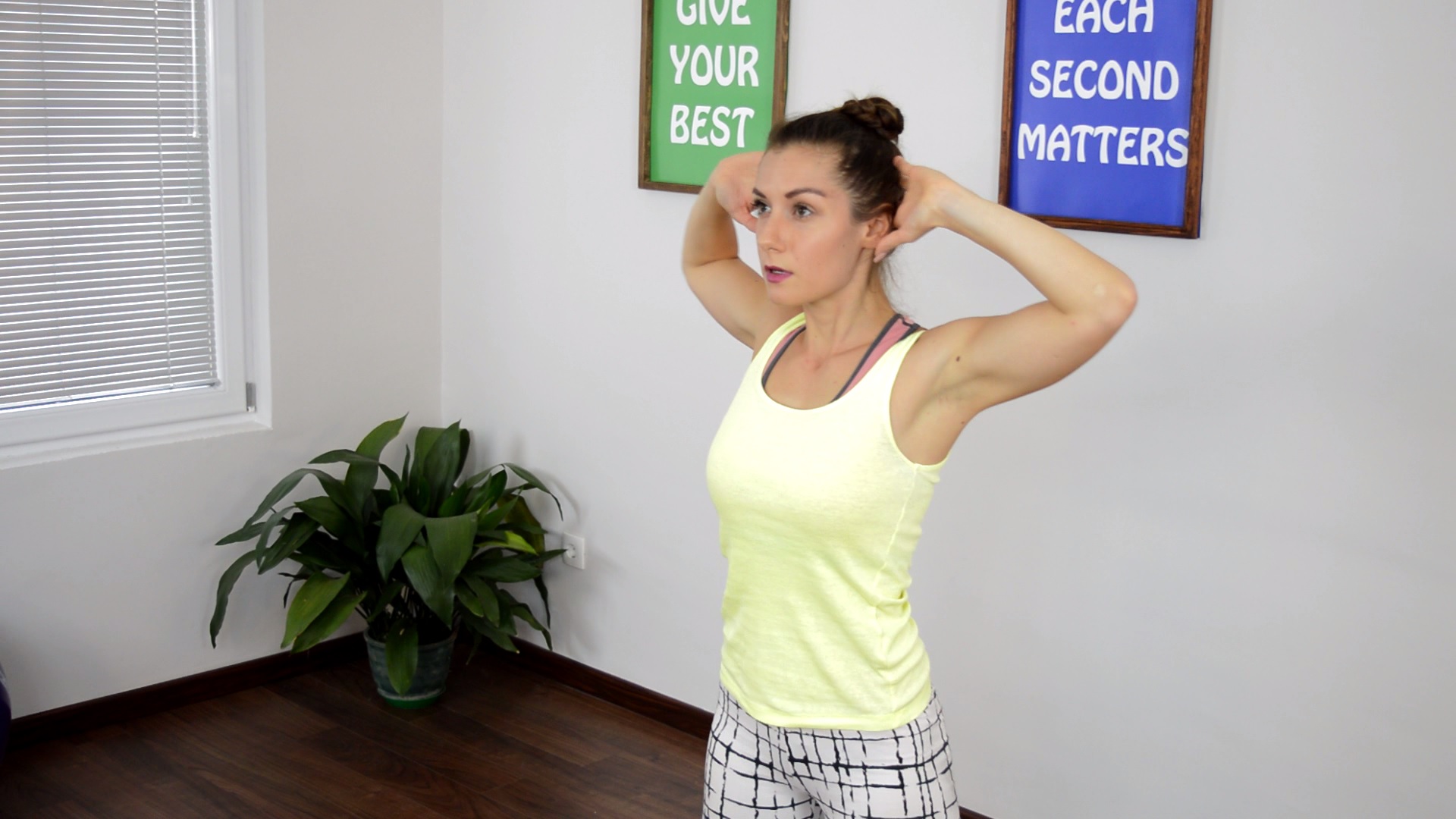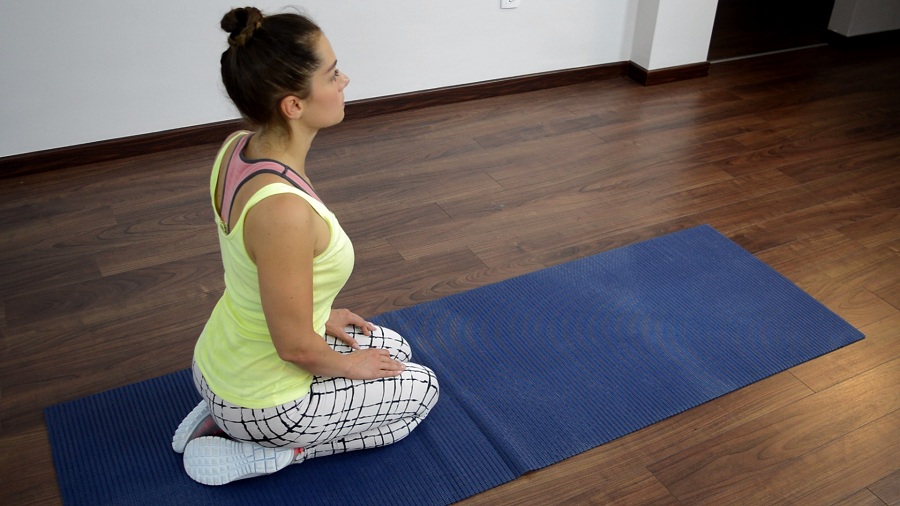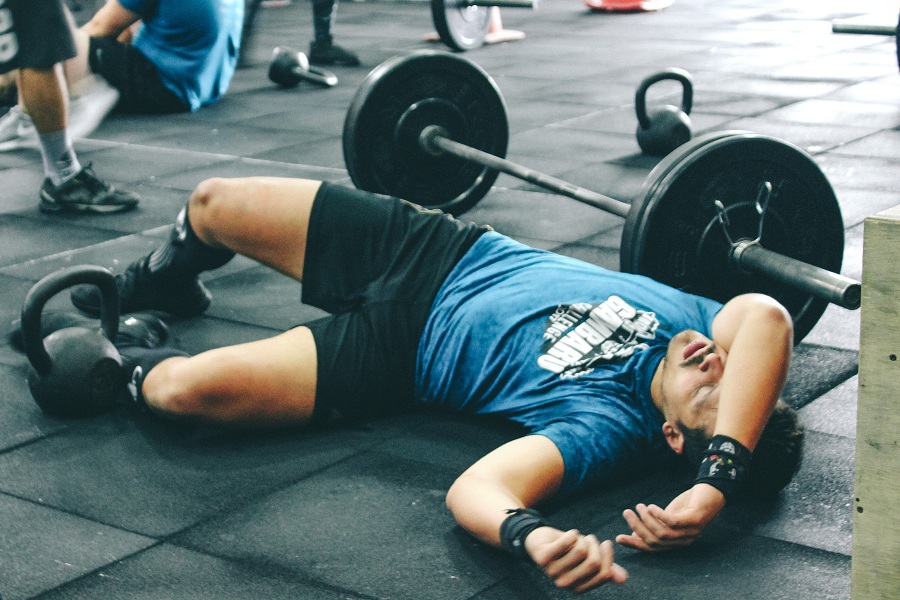We are constantly bombarded with information about the important benefits of exercise for our health and well-being. But as we are enticed with the carrot, we are also warned with the stick – the negative effects of inactivity are the sole reason why many people decide to adopt a fitness routine. It’s not so often, however, that we hear about the importance of rest days.

While it is important to engage in some sort of physical activity on daily basis, intense workout should be a much rarer occurrence. I get the appeal though. Swooped up by this fitness frenzy in a totally irrational pursuit to reach a desired body shape goal, I hardly ever stopped to think about the importance of rest days, and how skipping them might jeopardize both my progress and my health.
Some of the serious side effects of excessive exercise, and being deprived of proper rest include fatigue, hormonal imbalance, poor sleep, decreased immunity, mood swing and loss of appetite (to name but a few). And if you are following an ambitious workout program, expect to hit your plateau rather soon which is quite iconic considering how your effort for better results ultimately defeats the purpose.
If you are anything like I was two years ago, you are already panicking at the thought of spending a whole day without doing any sort of physical activity (oh, the horror!). And being used to all that exercise-induced serotonin, you may genuinely have a difficult time figuring out what to do on rest days (provided you have given-in to the “pressure” of taking them).
Stop fretting! Keep on reading and let an exercise-junkie convince you of the importance of rest days and that they don`t necessarily have to entail idling on the couch and doing nothing.
How important are rest days?
Working out, especially doing weightlifting and other forms of resistance training will cause body tissues to break down. One of the most important rest day benefits is that you’ll leave plenty of room for tissues to grow.

Many people wrongly believe that muscles are built in the process of working out. That’s not actually the case and here is why. When we are engaged in a physical activity, be that cardio or strength training, our bodies go into catabolic state when energy is produced due to breaking down of molecules into smaller units.
Catabolism actually gives our bodies the energy they need for the effort of exercising, but also causes small tears in our muscles and tissues. However, when we rest or engage in active recovery (I’ll explain that in a minute), our bodies promote protein synthesis and muscle repair – a state known as anabolism.
And here comes the importance of rest days. During the anabolic state, our bodies use energy to develop new cells, maintain tissue and grow muscles. This is how it works. Muscle growth is greatly stimulated by the hormone insulin. And for insulin to do its job, it is crucial that you keep two things in mind. The first is – you have to actually rest. This doesn’t exclude light physical activity, but you should refrain from any form of strenuous workout on your rest days.
And the second thing is – surprisingly enough – eating. The release of insulin is triggered by eating. Not eating enough on your rest days will curb the release of insulin and will deprive your body from the nutrition it needs for muscle repair and growth. And this brings us to the next question.
What to eat on rest days?

Rest days are all about repair and replenishment. So, on your rest days, it’s good to tuck in foods rich in carbohydrates as they set off insulin production and assist in replacing and restoring your glycogen levels. But don’t get overexcited! This doesn’t mean you should binge on junk food or processed snacks.
So let me pose the question once again – what to eat on rest days?
While it is easier to figure out what to do on rest days, nutrition can be a bit of problem. Stick, therefore, to complex carbohydrates like fruits, vegetables, and whole grains. These foods will give your body all the nutrients it needs to run efficiently.
Naturally, proteins are a must for repairing muscles and building new lean tissue, so make sure to feast on lean meat, poultry or fish, and your body will properly refuel during this resting phase. Some extra fat is also OK, as long as you are eating the healthy sources.
Regarding calories, make sure to maintain, or even lower your caloric intake if you are taking a rest day. If you are engaged into an active rest, then feel free to slightly up your caloric intake.
If, however, you still can’t warm up to the idea of having a day off from exercising and you struggle to find that middle ground between resting and not resting, don’t despair. Rest doesn’t necessarily mean that you need to spend the entire day lying in bed doing nothing. There is a concept called active rest and is perfect for all of you busy-buddies who just can’t manage to stand still.
What is active rest?

Active rest means exactly what it says – being active while resting. Rest days are taking a break from your regular exercise routine, which usually implies more intense workouts.
So, on an active rest day, you opt for a form of exercise that is much easier compared to the intensity of your normal workout. But many of you probably don’t know how to take an active rest day. What on Earth should you do?
Well, some options for an active rest day include:
Foam roller exercises
If you are familiar with the many foam roller benefits, a 15 minute session during your rest day may sound completely reasonable. Foam rolling should be part of your regular routine, but if you casually forget to enjoy the benefits of myofascial release, then at least make sure to try the foam roller on your rest day.
Low intensity cardio
If your regular workout routine involves strenuous weightlifting, opt for some cardio on your rest day. But let me quickly put at ease the minds of all heavy lifters, that I now picture frowning at the concept of muscle break-down – by cardio I mean a light, no longer than a 30-minute session of running or perhaps similar activities. Brisk hiking, if you are close to a relatively flat mountain terrain, can be an excellent idea.

Whatever you have in mind, you will have to make sure to keep your heart rate low. Your cardiovascular system will thank you and your muscles will stay intact.
Swimming
Swimming, much like running, is an excellent way to improve your cardiovascular health and conditioning. So if your regular training routine leaves you lagging behind on these two important components of a healthy body by all means get into that swimming pool and let your blood flow pick up some steam.
Swimming is an excellent no-impact workout, where you exercise a good range of motion. But do yourself a favor and don’t think of it a s workout. On your active rest day, it’s a hobby – a time out with friends, and nothing more. So if you don’t know what to do on rest days, just visit the beach, or the pool nearby and go for a swim.
Stretching
Stretching is almost as important as it is overlooked in the entirety of the fitness world. It is essential for repairing muscles and improving mobility and flexibility, but also for increasing blood flow and speeding up the recovering process.
So if you still don’t know what to do on rest days, but you want to keep it light and easy, treat your body with that awesome feeling only a good stretch can provide. You can choose a workout program that includes a bunch of yoga videos, or follow a low impact routine like PiYo, where you can do a series of stretches in combination with some more complex moves.
There are also many routines on YouTube that provide guidance for free, and you can also check our short session designed for the Fitness Updated program.
Yoga and meditation

In addition to the effects on the body, intense workouts can take their toll on the nervous system as well. Over-training can significantly affect your stress hormones and cause hormonal imbalance, which, in turn, can lead to disturbed sleep patterns and loss of appetite.
It’s a no-brainer that such a way of life will affect your body and even your workout regimen. This is where yoga steps in to save the day. It won’t only help strengthen and relax those overworked tense muscles, but also give your mind a break. And if you add a short session of meditation – you have a winner recipe for your active rest routine!
Here is a tip: Try to stay present with every movement, and with every sensation passing through your body. Often times we forget to be present during our workouts, and it is generally easy to see why – starting with intense routines right off the bat, who can blame you for not paying attention?
And if you manage to sustain this increased level of awareness throughout your entire fitness routine, you will come out of this practice with lot more than just the rest day benefits.
Any other form of light physical activity
You active rest days don’t have to be structured by the book. You can be spontaneous and routine-free for a day, and you’ll still be able to enjoy the rest day benefits. Take your dog out for a long walk, take a leisure bike ride, work in your garden… whatever keeps your blood flowing.

Active rest is also a good alternative to taking a rest day when you are sick. Despite the common opinion that you shouldn’t exercise when sick, anything moderate that won’t put additional stress on your body might work – and it might be even helpful. Choose from the list above and sweat out that cold!
If, however, you feel unable to lift your body from the bed, take the day off and see how the condition is progressing. Depending on the signals that your body is sending you, taking a rest day when sick is the best possible solution.
Have the importance of rest days hit home yet? Are you on the clear on what is an active rest day? Good! Let’s now briefly revise from another angle.
What happens if you don’t take a rest day?

Giving you the carrot, I’m now going to wave a while with the stick. Just stay with me and see what happens if you don’t take a rest day.
Risk of Injury
Overused muscles, ligaments and tendons are more prone to injury. The human body was not designed to wear itself down for weeks on end. Even as early as in our hunter-gatherer stage, our ancestors were mindful enough to stop for a moment and have a rest.
Adrenal fatigue
An over-trained body starts to produce quite a lot of cortisol, aka the fat-storing hormone. And here is where the importance of rest days for weight loss kicks-in. High-intensity workouts with no rest won’t help you lose those extra pounds, quite the opposite.
If you are hoping, for example, to lose belly fat by doing series of crunches for days on end, you better stop and reconsider.
It might be easier if you have a structured routine, so you can do the math upfront and never skip a rest day. The importance of rest days for weight loss cannot be overstated, so make sure to keep a record. If you would like an easy to follow program, make sure to check our own fitness platform where you’ll find plenty of workout videos, motivational advice, nutrition plans and recipes. We’ve also made progress tracking very easy, with the option to choose your own rest days.

Decreased quality of sleep
However tired you are, if your body is over-stressed your quality of sleep will decrease. Our muscle tissue is repaired thanks to the growth hormone produced while we sleep, so without proper sleep your muscles won’t get a chance to repair.
So, are you scared that your weight loss routine might come to a halt? Are you afraid about the coming sleep deprivation? Great, keep scrolling.
Weakened immune system
Increased levels of cortisol and adrenaline suppress the immune system. Without proper rest, you are not giving your immune system, much like your muscles, the necessary time to recover. And with the immune system shattered, you’ll definitely have to take your rest week – it’s not a matter of if, but when!
Decreased performance

Intense exercise every day takes its toll on your body and deprives it from the ability to function optimally. So unless you give your body an opportunity to recover and recharge, you opt for diminished performance every time you work out.
Training recovery is perhaps one of the most important aspects of your entire workout routine.
So let’s backtrack for a while, and see where we are.
Why are rest days important?
- Avoiding plateaus
- Avoiding injuries
- Keeping your performance up
- Maintaining a strong immune system
- Preserving your quality of sleep
- Avoiding adrenal fatigue
- Better muscle recuperation
- Muscle growth
- Lower levels of cortisol
- Keeping hormonal balance
- Preserving sanity
So let’s wrap this up. When it comes to exercising, less is sometimes definitely more. Forgetting, or ignoring, the importance of rest days may come at a high price! Being consistent in training requires plenty of willpower and lot of hard work and sweat, but putting your body through the wringer every day may actually set you back on your fitness journey.
Give yourself and your body the well-deserved breather and start treating rest as a non-dispensable part of your fitness routine. You’ll soon realize the importance of rest days, as your progress starts to pile up week after week.